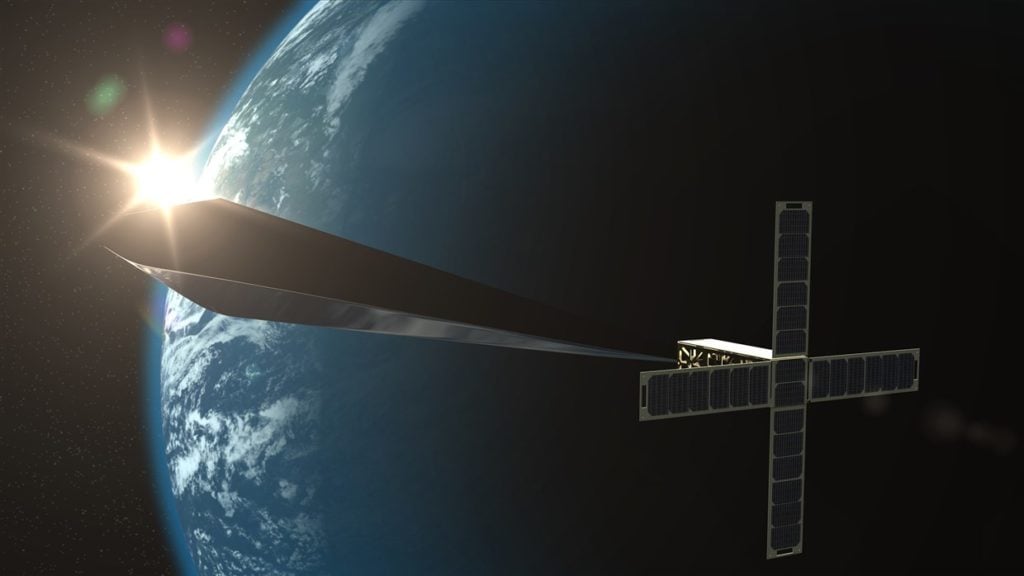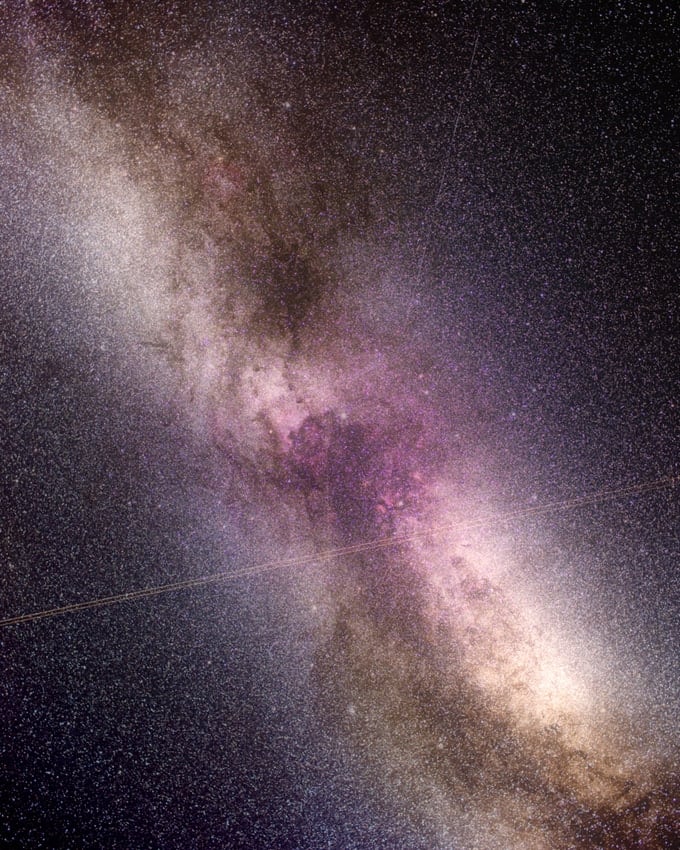On View
Trevor Paglen Is About to Launch a Reflective Sculpture Into Outer Space, and Astronomers Are Really Pissed Off About It
"It’s the space equivalent of someone putting a neon advertising billboard right outside your bedroom window."

"It’s the space equivalent of someone putting a neon advertising billboard right outside your bedroom window."

Sarah Cascone

This fall, Trevor Paglen will launch a shiny sculpture into space, a reflective, nonfunctional satellite. The orbital artwork is meant to encourage viewers to reconsider their view of humanity and its place in the universe. A group of astronomers, however, has expressed concerns that reflective orbital art will cause light pollution that could interfere with important astronomical observations.
Ten years in the making, Orbital Reflector has been designed with the expertise of aerospace firm Global Western and the support of Reno’s Nevada Museum of Art. A Kickstarter project launched last August raised over $76,000 to make Paglen’s extraterrestrial dream—total price tag $1.3 million—a reality. It’s scheduled to launch in mid-November aboard a SpaceX Falcon 9 rocket leaving from Vandenberg Air Force Base in California.
A 100-foot-long, diamond-shaped polyethylene balloon coated with titanium dioxide—it looks a lot like mylar—the sculpture will be packed into a brick-sized CubeSat, one of some 70 satellites in the rocket’s payload. Once it reaches its low-earth orbit, about 360 miles above the earth’s surface, a carbon dioxide cartridge will inflate the piece, allowing it to reflect the rays of the sun back to Earth, even when it is nighttime below.
“Any disruption will be minimal at best,” Amanda Horn, the director of communications for the Nevada Museum of Art, assured artnet News. “Because people have a hard time imagining what this artwork will be, I think that their minds run amok. It will appear about as bright as a star in the Big Dipper. It’s about the length of two school buses, and it will be moving very quickly. A full orbit will take about 94 minutes.”

Trevor Paglen with an early prototype of Orbital Reflector. Photo courtesy of Altman Siegel Gallery and Metro Pictures/Nevada Museum of Art.
Orbital Reflector will remain in orbit for approximately three months, before falling out of orbit and burning up in the atmosphere. “This is not something that is a permanent fixture,” Horn added. “It’s a romantic gesture. It’s land art in the sky.”
When the Kickstarter project for Orbital Reflector launched, the sculpture was primed to be the first satellite intended “purely as an artistic gesture, serving no military commercial or scientific interest,” according to the campaign video. “It is in many ways the opposite of every satellite that has ever been placed into orbit.”

The Humanity Star. Photo courtesy of Rocket Lab.
In January, rocket startup Rocket Lab beat Paglen to the punch. Its three-foot-wide “Humanity Star,” a many-faceted mirror ball, was meant as a “reminder to all on Earth about our fragile place in the universe,” according to CEO Peter Beck.
Then came the complaints.
“What is particularly annoying about this satellite is that it is designed to be visually bright and has no other purpose,” Jonathan McDowell, an astrophysicist at the Harvard-Smithsonian Center for Astrophysics, told Gizmodo. “It’s the space equivalent of someone putting a neon advertising billboard right outside your bedroom window.”
All satellites have some potential to interfere with the optical work of astronomers, so the impact of the temporary additions of Humanity Star and Orbital Reflector will likely be negligible. But other non-functional satellites could follow. The very word “sputnik,” after all, was used by Kazimir Malevitch as the name for a series of imagined orbital artworks. (The Russian painter’s concept is one of Paglen’s inspirations for Orbital Reflector.)

Trevor Paglen, Orbital Reflector, rendering. Courtesy of Trevor Paglen and Nevada Museum of Art.
Should artists make enough shiny satellites, it actually could cause a problem.
Gizmodo has come become a vocal opponent of the trend, publishing an article titled “Hey Artists, Stop Putting Shiny Crap Into Space.”
But for Paglen, who has become well-known for uncovering the hardware of government surveillance, it’s important to reclaim such tools for artistic use, and remind people of just how many satellites are already up there. Why not employ a satellite to promote a sense of wonder and awe, he asks, to make us reflect on something larger than ourselves?

Trevor Paglen, LACROSSE/ONYX V near Cepheus (Synthetic Aperture Radar Reconnaissance Satellite; USA 182), 2008. Photo courtesy of Altman Siegel Gallery and Metro Pictures.
“I think one of the most important things that art can do is give you a reason to look at something,” said Paglen in his Kickstarter video. “I’m going to create a reason for you to look up at the sky and think about what it is that you’re looking at.”
Although Orbital Reflector will be hard to spot in the night sky, speeding past at hundreds of miles of remove, an exhibition documenting its creation is currently on view at the Nevada Art Museum, including a model of the shiny sculpture.
Originally, Paglen was planning for a spring 2018 launch, but SpaceX has since pushed back the date several times. Regardless of criticism from the astronomy community, Horn is hopeful that the mid-November date will be a go: “We’re ready to launch,” she said.
UPDATE: Trevor Paglen has responded to his critics.
“Trevor Paglen: Orbital Reflector” is on view at the Nevada Museum of Art, 160 West Liberty Street, Reno, April 26, 2016–January 31, 2019.